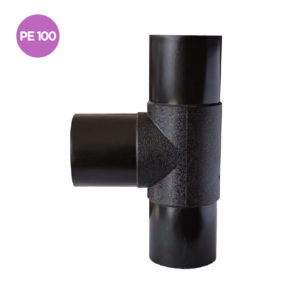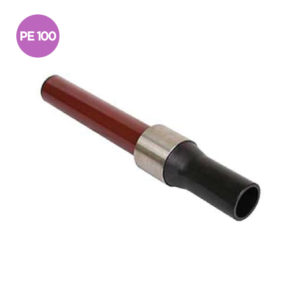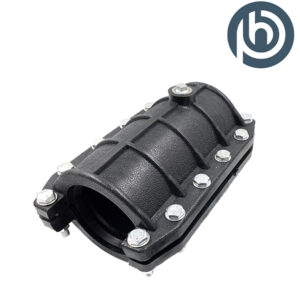Introduction
HDPE Fittings
HDPE fittings manufactured by Hydroplast that have been used for many years as a versatile and safe product that can be used in a variety of applications. Polyethylene fittings are commonly used in plumbing and electrical installations. They are also used in the automotive, agricultural, and construction industries. This blog will discuss the uses of Polyethylene fittings, what they are made of, and how they are installed.
HDPE fittings is one of the type of plastic piping that is available in a variety of shapes and sizes. They are typically used for drainage, sewer, and irrigation applications. they can be connected to each other using a variety of methods, including solvent welding and mechanical joining. Although they are generally more expensive than other types of plastic piping, they have a number of advantages, including being lightweight and easy to install.
Installation of the HDPE fittings can be quite simple. You will need to take the tubing and cut it to the desired length. If you are connecting a new faucet to an existing sink, you will need to unscrew the old faucet and screw in the new one. It is important that you make sure that there is nothing blocking the water flow. Make sure that the hose is on the right side of the sink and then use the wrench to tighten it down. Once it’s tightened down, use the wrench on the other side of the sink to tighten it down as well. Once it is tightened down, use a rag to clean up any excess water and, then use some plumber’s tape around the threads so that it doesn’t leak.




Properties of HDPE
HDPE is a thermoplastic polymer with a wide range of applications. It is used in packaging, as well as in pipes and fittings. It is a versatile material that can be used in a variety of applications due to its properties. Some of the properties that make it a good choice for pipes and fittings include:
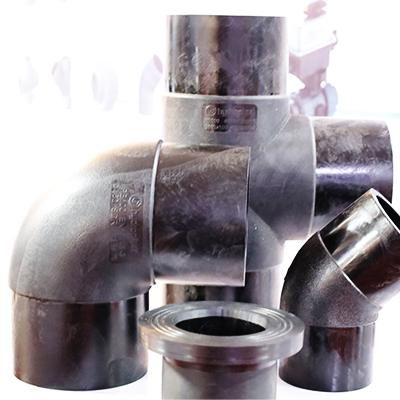




HDPE Fittings
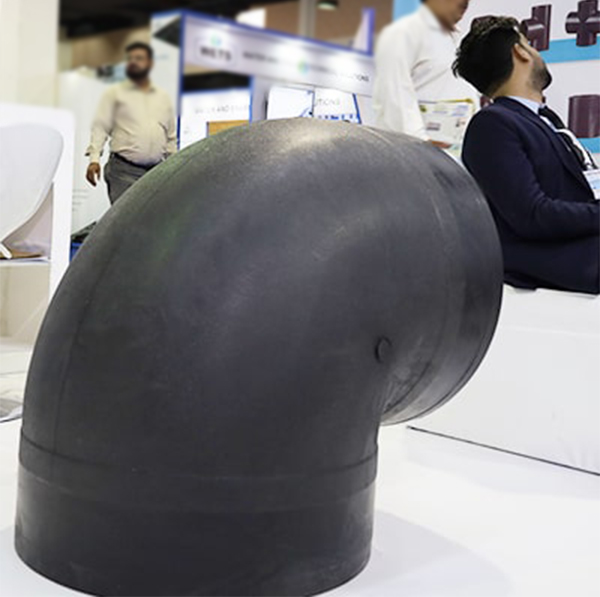
Advantages of using HDPE fittings
Using HDPE fittings for your plumbing is a great way to save money, time, and energy. If you have been considering using HDPE fittings for your plumbing, there are a few things you should know about them. The first thing you should know is that they are cheaper than standard fittings because they use less material and are made with a thinner wall. The second thing you should know is that they are easier to install. This is because they have a built-in compression ring that holds the pipe together and the compression ring also creates an air-tight seal. This means there is no need to use any tools like plumbers putty or Teflon tape when installing them. The third thing you should know is that they are more durable than standard fittings. This is because they have a thicker wall and a shorter thread length which prevents them from being easily damaged.
One of the most common problems that plumbers face is when they have to replace a pipe in a home or business. These problems usually occur when the original pipe is old and worn out. To help prevent these issues, plumbers use plastic pipes which are called HDPE fittings. These fittings are easy to install, durable, and less likely to cause leaks. These make it easier to disconnect the old pipe and connect it with the new one.
HDPE (Polyethylene) fittings and pipes are seen to be the finest option for fluid transportation systems in industrial projects, power plants, and water supply systems. For major firefighting projects, gas supply systems, and urban sewage systems, HDPE utilization is strongly advised.
We hope you found our blog post interesting! We know that many homeowners are looking for polyethylene fittings for their home improvement projects. Different polyethylene fittings are available for a variety of needs, like drainage and irrigation, so it can be challenging to know which fittings are best for your home. We’re here to help! Please contact us if you have any questions. We’re always happy to hear from you and we appreciate all of your support! Don’t forget to stop by our website to learn more about HDPE fittings!
FAQ
What exactly is HDPE (also known as HDPE, MDPE, LDPE, LLDPE, etc.) and what are some applications for it?
Thermoplastic polymer polyethylene (HDPE) is a member of the polyolefin family of polymers. Typically, it is divided into four categories based on density: HDPE (high-density HDPE), MDPE (middle-density PE), LDPE (low-density PE), and LLDPE (linear low-density PE). It can be found in anything from milk bottles and plastic bags to high performance plastic pipes, depending on its precise grade and qualities.
How are PE or HDPE made?
All polyethylene is produced using hydrocarbons, which are a type of petroleum feedstock. The sole elements present in the feedstocks (and raw materials) and polyethylene are hydrogen and carbon (hydrocarbon)
What does a thermal/ultraviolet stabilizer do?
Polymer resins are given stabilizers to increase and extend their capacity to withstand environmental and natural pressures. Antioxidants prevent polymer oxidation, UV stabilizers lessen UV or sunlight deterioration, and thermal stabilizers enhance behavior when exposed to high temperatures.
Can potable water systems safely use HDPE fittings?
When the plastic has been approved to NSF International’s requirements for health impact applications by a third-party certifying organization, it is safe and frequently used in potable water systems. These standards include NSF 14 and NSF 61, for instance. Food containers are frequently made of polyethylene (milk bottles, plastic food bags, etc.)
What is NSF?
NSF is the acronym for the National Sanitation Foundation. It is a certification mark that is used on products that have met certain standards of sanitation. The standards are to ensure a product is safe to use and not contaminated with harmful bacteria. NSF certification is required for swimming pools, spas, whirlpools, hot tubs, and many other products that come into contact with the water.
What is NSF Standard 14
The ANSI/NSF Standard 14, “Plastic Piping System Components and Related Materials” outlines the specifications for plastic piping systems. This standard ensures that all plastic piping systems are manufactured to be safe and meet industry-specific standards. The standard also includes requirements for certain types of plastic materials used in the manufacturing of plastic piping systems. The ANSI/NSF Standard 14, “Plastic Piping System Components and Related Materials” is published by NSF International, a nonprofit public health organization dedicated to protecting the public from chemical hazards.
What is NSF Standard 61?
NSF Standard 61 is a set of standards that specify the quality, safety, and performance of water-based products. NSF Standard 61 was created in response to the growing concern of waterborne disease outbreaks such as Cryptosporidium and Giardia. NSF Standard 61 is also in response to increased public health awareness of water quality and safety.
Why is a fixation joint superior to a gasket joint in?
One could see a fusion connected pipeline as a seamless, continuous pipeline. On the other side, in many water systems, gasket joints are a source of leakage and lost water. Leaks can develop for a variety of reasons, including incorrect gasket installation, grit or dirt adhering to the gasket, inadequate lubrication, negative pressure (vacuum) in the pipeline, ground movement or subtrench consolidation, significant thermal change, or gaskets being blown out by surge pressures. For preventing leaks, fused joints are typically preferred to gasket joints.
How long should it take to make a fusion joint using HDPE fittings?
A number of factors, including pipe size, work setup, and fusion parameters and processes, affect how long it takes to make a fusion joint. A general guideline is 1 ½ to 2 minutes per inch of pipe diameter when using a fusion machine and a skilled workforce, depending on the DR. Always refer to the installation instructions provided by the fittings manufacturer for the appropriate specifications and practices. Use the temperatures recommended by the relevant manufacturer
Will adhesives work with HDPE?
A high-quality adhesive made specifically for joining polyethylene and polypropylene is called PE-PP 45. In contrast to (most) other acrylic glues, PE-PP 45 already contains a primer. This is a part of the contents and does not need to go through a separate process from the adhesive. The primer will work to alter the structure to raise the surface energy once PE-PP 45 has made its way down the mixing nozzle and reached the bonding surface. Bonding is made possible by this. Although the PE-PP 45 is expensive, it performs exceptionally well. It is widely utilized and has consistently shown to be a practical and affordable substitute for plastic welding for creating these kinds of high-strength joints.
For how long does fusion force need to be sustained to guarantee a high-quality joint?
The molten joint needs to be forced to remain stationary until it has cooled sufficiently to gain strength. The pipe manufacturer will determine the required cooling durations for the junction based on the material, pipe diameter, and wall thickness. Joint integrity must be achieved by giving the machine’s clamps adequate time to cool while under stress before removal.
After facing, should the pipe ends be cleaned?
Before performing the facing procedure, always wipe the pipe ends to ensure they are clean and free of contaminants. Care should be made to clear all shavings from the fusion area after facing the pipe. With a clean, non-synthetic cloth, remove any loose particles. Unless there is contamination present, wiping the pipe ends is not necessary. Always refer to the suggested guidelines and practices from the pipe manufacturer. Use the temperatures recommended by an appropriate firm, local, state, or federal requirements for pipes located outside of the United States.
Do expansion joints need to be used with HDPE pipes?
In general, there are better ways than expansion joints to deal with temperature change in an above-grade or aerial pipeline. If an expansion joint is utilized, it needs to be made specifically for HDPE pipes. The HDPE pipe could be harmed if an incorrect expansion joint, such as one made for steel pipe, was used.












